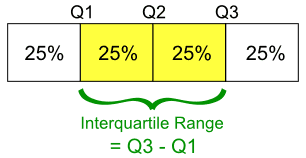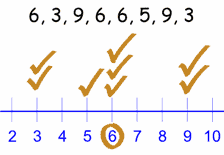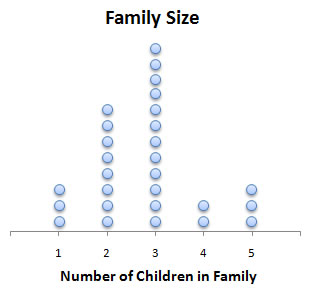Finding the Mean Absolute Deviation (MAD)
Step 1: Find the mean of the data.
Step 2: Find the distance between each data value and the mean.
Step 3: Find the sum of the distances in Step 2.
Step 4: Divide the sum in Step 3 by the total number of data values.

























